#5.11 - reflections
Explore tagged Tumblr posts
Note
Do you believe in the mantra, "Sam and Dean know each other better than they know themselves?" I mean, they believe in each other, but to me they are different birds... and I think that's okay!
No I don't think that's true. I think they generally know each other well—they live in each other's pockets—but there are definitely things they do not get about each other.
Sam spends all of season 1 slowly finding out that he has no fucking clue who Dean is (fun little compilation set of some moments here). A lot of that is by Dean's design. Sam spends a lot of the series getting things wrong about Dean, though I would say he gets better at understanding Dean while working past some of his own personal issues. Even in 14.12 though Dean is dropping new family lore like "Dad would send me away if I pissed him off sorry if it looked like I just took off." I also think Sam's various attempts to cheer Dean up in early season 13, from minimizing the tragedy they just suffered to trying to force Dean into fake therapy to trying to ply him with breakfast beers and strip clubs shows a lack of understanding about Dean on a pretty deep level. At the same time, I think Sam's actions over that period reflect Sam's own grief that he doesn't want to face. He is desperately trying to pretend everything will be fine and part of his needs within that avoidant strategy involve trying to get Dean to perform being okay for him and act like a happy-Dean-caricature. Sam has really never been that good at understanding or handling Dean grieving though (see also: John's death and Sam's treatment of Dean's hell trauma but also 5.14 and 5.11 because jfc). Sam also has a tendency to project his own negative thoughts about himself or shift blame onto Dean in ways that are inaccurate to Dean's feelings/actions (ex: 1.22, all of this, 5.02, 7.02, 7.03). I do think there are other moments where Sam shows he understands things about Dean other people might not notice at the same time. For example, in 14.20 when Sam calls out Dean for being a nerd. Him taking Dean on the Mint Condition trip because he knows the case involving Thunder Cats will suit his interest. His plea in season 3 for Dean to admit that he's scared, saying Sam can see right through him. And THE SLINKY!!!! I LOVE THE SLINKY I WAILLLLL
Then there's Dean's understanding of Sam. I think Dean is generally good at parsing Sam's motives and what Sam might do next (see: 4.01 and 4.21 where Dean tracks Sam down based on aliases or cars he knows Sam would choose). But in the same way where Sam's own issues can obscure his grasp of Dean's grief, Dean's insecurities can obscure his grasp of Sam's motives. For example, in 4.22 when Dean makes a parallel between the Stanford fight and the demon blood arc that I just don't think holds much water. Dean's confusion over Sam being a lonely kid growing up (11.08) which likely has more to do with Dean's parentification—worrying that he failed Sam in some way. Dean is genuinely surprised that Sam thought John was disappointed in him in 1.08, but that confusion makes more sense from the perspectives of Dean's own insecurities, given Dean always felt disposable and like Sam's safety was a priority and Dean's wasn't. I also think Dean sometimes wears rose-colored glasses about Sam in the same way a proud parent does + wrestling his own insecurities. For example, in 8.14 when Dean calls Sam "the brains of the operation" and implies that he himself is not smart and is only good for killing things, which is wildly untrue (and which Sam calls out as wildly untrue—another point in the Sam understanding Dean column!).
Basically... I think in the absence of a lot of their insecurities/traumas, they'd have a better grasp on each other than they do. I don't think they're bad at understanding each other but I think the suggestion that they know each other better than they know themselves is just way too out there for me. I just don't think that's true at all and tbh I think it's kind of a patronizing outlook on both of them.
97 notes
·
View notes
Text
Reveling in Richonne - Master List
TWD Season 3 - Season 7


Season 3
#1: The Fence Arrival (3.06)
Season 4
#2: The Rescue (4.08)
#3: The "It's For You" (4.09)
#4: The Claiming (4.11)
#5: The “Hey, You Too.” (4.16)
#6: The “I’m Okay Too” (4.16)
Season 5
#7: The "You Ready?" (5.11)
#8: The Knock Out (5.15/5.16)
#9: The "I'm Still With You" (5.16)
Season 6
#10: The Rescue pt.2 (6.09)
#11: The Domestic Intro (6.10)
#12: The Low Five (6.10)
#13: The "Want" (6.10)
#14: The Toothpaste (6.10)
#15: The Listening (6.10)
#16: The "I'd Do It For You" (6.10)
#17: The Couch Conversation (6.10)
#18: The Mints (6.10)
#19: The Reveal (6.11)
#20: The "This Is Different" (6.11)
#21: The RV (6.11)
#22: The Shot Calling (6.11)
#23: The "Don't." (6.11)
#24: The "We’ll Win" (6.11)
#25: The Checking In (6.12)
#26: The East (6.15)
#27: The Concern (6.15)
#28: The Dread (6.16)
Season 7
#29: The Memories (7.01)
#30: The Look (7.01)
#31: The Speaking Up (7.01)
#32: The Co-Leadership (7.01)
#33: The Dream Wedding (7.01)
#34: The Bed (7.04)
#35: The Watching Her Go (7.04)
#36: The Protection (7.04)
#37: The Request (7.04)
#38: The “Are You Going To Let Me?” (7.04)
#39: The Deer Drop (7.04)
#40: The Pallet (7.04)
#41: The Fight (7.04)
#42: The Disclosure (7.04)
#43: The "I'm Gonna Try" (7.04)
#44: The Grimes 2.0 (7.05)
#45: The “Good Luck” (7.05)
#46: The Kiss (7.05)
#47: The "Even If" (7.05)
#48: The Walkie Talkies (7.07)
#49: The Reflection (7.08)
#50: The “Me and You” (7.08)
#51: The Holding Hands (7.08)
#52: The Stepping In (7.09)
#53: The Holding Hands pt. 2 (7.09)
#54: The Side Eye (7.09)
#55: The Mow Down (7.09)
#56: The Smile (7.09)
#57: The Arm (7.10)
#58: The Push (7.10)
#59: The Collaboration (7.10)
#60: The Hug (7.10)
#61: The Enemies-To-Friends (7.10)
#62: The Cat (7.10)
#63: The Everything!! (7.12)
#64: The Montage (7.12)
#65: The "We Gonna Win Today?" (7.12)
#66: The "What's That Smile?" (7.12)
#67: The Pretzels (7.12)
#68: The "Just A Little More" (7.12)
#69: The Sleeping (7.12)
#70: The Owing (7.12)
#71: The Rounds (7.12)
#72: The “Think We Can?” (7.12)
#73: The Fall (7.12)
#74: The Candlelit Dinner (7.12)
#75: The Proposal (7.12)
#76: The “…Together” (7.12)
#77: The Wakefulness (7.12)
#78: The Eight (7.12)
#79: The Great Plan (7.12)
#80: The Flirting (7.12)
#81: The Deer (7.12)
#82: The Ride or Die (7.12)
#83: The Embrace (7.12)
#84: The Collecting (7.12)
#85: The Heart to Heart (7.12)
#86: The "I Can't Lose You" (7.12)
#87: The “I Can Lose You” (7.12)
#88: The “You Led Me Here” (7.12)
#89: The Cat pt. 2 (7.12)
#90: The “Few More Days” (7.12)
#91: The Package Deal (7.15)
#92: The Matriarch (7.16)
#93: The "We're Together" (7.16)
#94: The "You care?" (7.16)
#95: The Showdown (7.16)
#96: The “Somebody Important to You” (7.16)
#97: The Discovery (7.16)
#98: The Relief (7.16)
#99: The TLC (7.16)
#richonne#reveling in richonne#list & links#s3 - s7#richonne fandom#officially organized all the RIR posts ♡#it only took a couple lifetimes to finally get around to compiling it all 😊#richonne family#michonne grimes#rick grimes#rick x michonne
156 notes
·
View notes
Text
Whey Protein Market Analysis: Trends, Size, and Projections, 2032

Market Overview
The global whey protein market was valued at USD 11.79 billion in 2023 and is expected to grow from USD 12.64 billion in 2024 to USD 22.63 billion by 2032, reflecting a CAGR of 7.5% during the forecast period. North America led the market in 2023, holding a 35.96% share. In the U.S., the market is anticipated to expand significantly, reaching an estimated USD 5.11 billion by 2032, driven by increasing health awareness and growing consumer focus on daily protein intake.
Rising consumer awareness regarding a healthy diet is expected to boost consumer product demand. Further, growing innovations in protein manufacturing containing several amino acids may increase the product’s adoption. Moreover, robust demand for premium products may facilitate the product demand. In addition, the strong demand for premium products across the personal care industry is expected to propel industry development during the upcoming years.
List of Key Players Profiled in the Report
Hilmar Cheese Company, Inc. (U.S.)
Saputo Inc. (Canada)
Glanbia plc (Ireland)
Fonterra Co-operative Group Ltd. (New Zealand)
Arla Foods (Denmark)
Alpavit (Germany)
Wheyco GmbH (Germany)
Milk Specialties (U.S.)
Carbery Group (Ireland)
LACTALIS Ingredients (France)
Segments
By type, it is segmented into isolates, concentrates, and others. Based on application, it is classified into animal feed, food and beverages, and others. Geographically, it is clubbed into North America, Europe, Asia Pacific, South America, and the Middle East & Africa.
Report Coverage
The report provides a detailed analysis of the top segments and the latest trends in the market. It comprehensively discusses the driving and restraining factors and the impact of COVID-19 on the market. Additionally, it examines the regional developments and the strategies undertaken by the market's key players.
Source: https://www.fortunebusinessinsights.com/whey-protein-market-106555
Drivers and Restraints
Strong Demand for Protein-Rich Diet to Nurture Industry Progress
The rising demand for a protein-rich diet is expected to foster the demand for whey protein. The rising popularity of ready-to-cook meals and packaged foods leads to high-quality protein foods. Further, growing chronic illnesses are expected to boost the demand for the product from the population. Also, the rising per-capita spending and adoption of healthy lifestyles may bolster the product’s consumption. In addition, the rising demand for sports supplements from athletes and gym enthusiasts can drive the whey protein market growth.
However, the strong demand for plant-based protein may hinder the market’s progress in the coming years.
Regional Insights
Rising Awareness Regarding Easy Usability and Convenience to Boost Growth in North America
North America is expected to dominate the whey protein market share due to rising awareness regarding easy usability and convenience. The market in North America stood at USD 3.73 billion in 2021 and is expected to gain a huge portion of the global market share. Further, evolving consumer preferences and tastes may boost the product demand. These factors may propel industry growth.
In Europe, increasing trends of preventive healthcare, rising emphasis on healthy living, and growing demand for protein supplements may foster the product’s demand. In addition, the adoption of proteins in naturally and synthetically derived foods may propel market growth.
In Asia Pacific, the rising domestic demand and exports for dairy-based products, such as whey and casein, may foster market development.
Competitive Landscape
Companies Announce Acquisition Strategies to Reinforce their Stance
Prominent companies operating in the market announce acquisition strategies to reinforce their market position globally. For example, Saputo Inc. declared two acquisitions in the value-added and dairy alternatives segment. The company invested nearly USD 146.94 million and acquired Wisconsin Specialty Protein, LLC’s Reedsburg facility. It produces value-added ingredients such as whey, goat, organic lactose, and others. This acquisition may enable the company to reinforce its market stance globally. Furthermore, companies adopt product launches, mergers, partnerships, and research and development strategies to boost their annual revenues.
Industry Development
November 2023: FrieslandCampina Ingredients, a leading global protein supplier, announced the launch of Nutri Whey ProHeat. The company's new ingredient is microparticulated and heat-stable, designed for the medical nutrition market.
0 notes
Text
Novelember, Day 27:
1) Last notes from two different notebooks consolidated. 2) Found snippet for a future chapter; added to notes for the next year, 264 words. 3) 5.07 isn’t long enough to be a chapter but the exposition is needed; doesn’t go with chapter before or after SO…an interlude…? YES, an interlude with the main character talking about it with her brother makes sense. Updated chapter title and road map to reflect this. 4) Secondary character should have been introduced by 5.09; added note to chapter. 5) Secondary character should have been in 5.11; added note to chapter.
0 notes
Text
Samsung Galaxy Z Fold 6 Review
The $1,899.99 Samsung Galaxy Z Fold 6 picks right up where the Z Fold 5 left off: It's an exceptionally versatile phone with enough power to handle most any task you throw its way. The improvements over its predecessor aren't groundbreaking, but its refined cover screen experience, increased durability, and reduced weight all help give it a premium feel in line with its price. The fantastic camera system, seven years of software support, and innovative Galaxy AI features are highlights, too. Our main complaint centers around the Z Fold 6's underwhelming charging specs, but that's not enough of an issue to prevent it from earning our Editors' Choice award. It's simply the best big foldable phone phone on the market.
The Galaxy Z Fold 6 measures 6.04 by 2.68 by 0.48 inches (HWD) when closed, spans 6.04 by 5.22 by 0.22 inches when open, and weighs 8.43 ounces. It's shorter, wider, thinner, and lighter than the Z Fold 5, which measures 6.10 by 2.64 by 0.53 inches closed, expands to 6.10 by 5.11 by 0.24 inches unfolded, and tips the scales at 8.92 ounces. The aging $1,799.99 Google Pixel Fold is downright hefty by comparison. It comes in at 5.50 inches by 3.10 inches by 0.50 inches closed, folds out to 5.50 by 6.24 inches by 0.23 inches, and weighs 9.98 ounces. All three of these devices fold flat when closed, a must for all foldable phones these days.
The Z Fold 6 and Fold 5 have the same layout of buttons and ports. The volume rocker and power button/fingerprint sensor are on the right edge. The fingerprint sensor works well, with few errors. Thankfully, Samsung now allows you to input your fingerprint while the device is still closed. (This was not possible on the Z Fold 5.) Face Unlock is also an option, but it's less secure. A USB-C 3.2 port for charging and data transfer is at the bottom right of the opened device, while dual speaker grilles are at the left top and left bottom of the frame. Whereas the grilles for the latter have a sleek, slit-like appearance here, those on the Z Fold 5 have nine distinct holes. The SIM tray on the left frame accepts one physical nano-SIM; the Z Fold 6 also supports eSIM.
Corning Gorilla Glass Victus 2 covers the front screen and the back panel; this is the same material that protects the Galaxy Z Flip 6. According to Corning, this glass handles drops on rough surfaces better than the original Victus. The Samsung Galaxy S24 Ultra uses a newer material called Gorilla Armor, which resists scratches, protects from drops, and reduces screen reflections by 75%. I would like to see the Galaxy Z Fold series adopt the same options as the S24 Ultra in light of their higher starting prices.
Samsung uses an enhanced Armor Aluminum for the Z Fold 6's frame, which is 10% stronger than the Armor Aluminum on the Fold 5. Also new for this model is official dust resistance. The Galaxy Z Fold 6 gets an IP48 rating, an improvement over the Galaxy Z Fold 5's IPX8 rating. Both can survive submersion in water, though the Z Fold 6 can also resist ingress of materials 1mm or larger. For comparison, the Pixel Fold has an IPX8 rating.
The build quality of the Z Fold 6 is superb, with great attention to detail. The squarish corners and increased width are the biggest design changes. Galaxy Note and S24 Ultra fans will be familiar with the pressure of the corners, but some people might find them uncomfortable. I was aware of the corners at first, but they became normal to my hands after a few hours. Holding the closed Fold 6 on the hinge side is more forgiving, thanks to the hinge's curves. I found the Z Fold 6 more comfortable to hold while open than closed, thanks to the difference in weight distribution.
The hinge operates smoothly with the right amount of resistance. The Z Fold 6 holds its angle from about 45 to 135 degrees; otherwise, it snaps shut or open. Like previous models, the device should survive 200,000 folds. OnePlus claims its foldable phone, the OnePlus Open, can withstand a million folds.
Three cameras are on the rear in a raised, pill-shaped area, with a flash to the right. Otherwise, the back is a showcase for the colored panel. The Z Fold 6 comes in Pink, Navy, or Silver Shadow (the last the color of my test unit). Samsung also sells two exclusive colors on its website: Crafted Black or White. The matte finish on the back, frame, and hinge gives the Z Fold 6 a sophisticated look, though the back of my test unit was a smudge magnet.
The Galaxy Z Fold 6 is compatible with the S Pen stylus on the inner screen, though it's an optional accessory. Samsung says that any S Pen that works with older Z Fold models will work on the Z Fold 6.
0 notes
Text
Kulicke And Soffa Industries Inc as of the shareholder record 2024-03-29 $KLIC #KulickeAndSoffaIndustriesIncasoftheshareholderrecord2024-03-29
Singapore-based electronic equipment manufacturer, Kulicke & Soffa Industries, Inc. (NASDAQ: KLIC), recently declared a quarterly dividend of $0.20 per share for its common stock. This decision comes as the company aims to provide increased value to its shareholders. Furthermore, despite recent stock fluctuations, Kulicke & Soffa has demonstrated its resilience by showcasing improved performance over the past month. In this article, we will outline the facts surrounding the dividend announcement and assess their impact on the company*s shares. Facts: 1. Dividend Declaration: Kulicke & Soffa*s Board of Directors authorized a quarterly dividend of $0.20 per share of common stock. This move reflects the company*s commitment to rewarding its shareholders with increased returns. 2. Stock Performance: Over the past three months, Kulicke & Soffa Industries Inc*s stock experienced a decline of -1.63%. However, in the last month, the stock has shown improvement, with a gain of 5.11%. Despite this positive trend, the stock currently trades only 24.3% above its 52-week low. https://csimarket.com/stocks/KLIC-Dividend-Comparisons.html?utm_source=dlvr.it&utm_medium=tumblr
0 notes
Text
$VNO #SP500 #NASDAQ #SPX $GLM-USD
Wednesday, April 10, 2024 saw a significant sell-off in the stock market. Various sectors of the industry experienced a drastic downfall, pushing the major indices into a bearish environment. Industries were hit hard, with some noting drops of -6.77%, others falling -7.41% from the year's beginning, and several others plummeting as low as -1.59% and even -4.05% for the week. This trend in the stock market was reflected in certain industry sectors that over the past 90 days experienced a downfall in performance, as some declined by -5.11%. The turbulence of the market was not limited to traditional stocks but extended to the world of cryptocurrencies. Both Bitcoin and Ethereum, two leading digital currencie https://csimarket.com/news/news_markets.php?date=2024-04-10T16295&utm_source=dlvr.it&utm_medium=tumblr
0 notes
Text
Wesfarmers Share Price Surges 5% to Reach New High Post Dividend Hike
Amidst a significant rebound in the S&P/ASX 200 Index, one standout performer is Wesfarmers Ltd (ASX: WES), an industrial and retail conglomerate within the ASX 200. With the Wesfarmers share price soaring by an impressive 5.11% to $61.95, reaching a new 52-week high of $62.11, investors are undoubtedly celebrating the company's stellar performance. The catalyst behind this enthusiastic share price surge lies in Wesfarmers' latest earnings report, which showcased notable growth and positive outlook for the company.

Wesfarmers' Strong Earnings Performance
Wesfarmers recently unveiled its earnings report for the six months ending 31 December 2023, delivering a promising outcome for investors. Despite market uncertainties, the company reported a commendable 0.5% increase in revenues, reaching $22.67 billion. More notably, Wesfarmers recorded a 1.6% rise in Earnings Before Interest and Tax (EBIT) to $2.2 billion, while Net Profits After Tax (NPAT) surged by 3% to $1.43 billion. The company's robust financial performance enabled it to raise its interim dividend by 3.4% to a fully franked 91 cents per share, underscoring management's confidence in the company's growth trajectory.
Positive Outlook and Market Response
Buoyed by its strong earnings results, Wesfarmers' management expressed optimism regarding the company's performance in the fiscal year 2024. Notably, sales at key subsidiaries such as Bunnings and OfficeWorks remained steady, while Kmart exhibited robust sales growth, further bolstering investor confidence in Wesfarmers' future prospects. The market's enthusiastic response to Wesfarmers' earnings report is evident in the company's remarkable share price surge, reflecting investors' satisfaction with the company's financial health and growth trajectory.
Investor Delight and Performance Metrics
The significant gains witnessed in Wesfarmers' share price on Thursday underscore investors' delight with the company's performance. Year-to-date, Wesfarmers' shares have surged by 7.7%, while boasting an impressive 25.4% increase over the past 12 months. With the latest dividend announcement, Wesfarmers shares now offer a forward dividend yield of 3.13%, demonstrating the company's commitment to delivering value to shareholders through consistent dividend payouts.
Conclusion
Wesfarmers' remarkable share price surge on the back of its strong earnings report highlights the company's robust fundamentals and growth potential. With steady revenue growth, improved EBIT, and a positive outlook for fiscal year 2024, Wesfarmers continues to position itself as a formidable player within the ASX 200. Investors seeking exposure to a reliable and growth-oriented conglomerate may find Wesfarmers an attractive investment proposition, supported by its impressive performance metrics and commitment to shareholder value.
0 notes
Text




She built an ego so big, as a means of feeling as if she mattered at all.
Wentworth // 4.02 Poking Spiders // 4.12 Seeing Red // 5.06 Happy Birthday, Vera // 5.11 Coup de Grace //
#wentworth#wentworth prison#pamela rabe#joan ferguson#my edits#gif#wentworth season 4#wentworth 4.02#wentworth 4.12#wentworth season 5#wentworth 5.06#wentworth 5.11#ego#reflection#ramblings
27 notes
·
View notes
Text
I love this little piece of almost Haven dialogue that got cut from 5.11, about the kid who started working out and got really buff because he was being bullied. At one point in the draft script there was a conversation between Audrey and Dwight that would have gone something like this:
Audrey: “Even when you’re really bulked up can you still feel like it’s not enough?” Dwight: “All the time.”
And it sounds like they cut it because they kind of re-structured the whole episode, but I think that’s kind of a lovely line for Dwight tbh.
More notes on the episode commentary here.
15 notes
·
View notes
Text
May - The Keep, South, Area 1C
#dungeon23
5.9. Backstage
Dark, only a hint of light emanates from a gap in the stage curtains. A faint set of glowing markers are stamped into the floor, creating a guide through the mess of props, trunks, backdrops and stage lamps. Most anything can be found here, an adventurer needs only to name it. However, the object is completely fake. Any weapon found is an imitation, hardly dangerous.

5.10. Theater Stage
A grand stage, surrounded by red, moth-eaten curtains. The play is about to begin.
Act 1: The Queen’s death, and The King’s quest to revive her. In which he, himself, did manage such a thing.
Act 2: The harrowing events that ravaged the kingdom for a fortnight. In which The Queen did eat many people.
Act 3: The ingenious actions of Baltharius, the Mystical. In which he did seal The Queen’s living corpse in the Cathedral.
Act 4: The grateful King recognizes the folly of his ways. In which he appoints Baltharius to manage all affairs of the kingdom, forever, and ever, from here on.
The rudimentary propaganda piece is enacted through holographic emitters of poor audio and visual quality.

5.11. Dressing Room
A cold stillness fills the air. Dressing stations line the walls, filled with make-up slates, brushes, faux jewelry, wigs, and other items used in the art of theater. Costumes are hung about in various combinations. At the far north end of the room, a large mirror. A poster tacked to the southern door reads: “Reign Guilfoyle, Final Performance, The Basting Stitch.”
Reign Guylfoyl was the last human to perform in The King’s theater, enacting a solo performance where they play all the roles themselves. A roster of one dozen characters relay the events of a cataclysmic scenario, in which the world is quickly shrinking to the size of the head of a pin. One by one, they each disappear into an all-consuming spherical void as it closes in around them.
Guilfoyle’s ghost haunts the theater and will inhabit several costumes at once, bringing them to life, near-simultaneously. Reign’s true visage can only be seen when looking into the reflection of a mirror, as their spirit darts from one hollow costume to the next, inflating it with ectoplasmic energy. The costume slowly deflates if Reign is not present for more than a few seconds.
Guylfoyl has trouble differentiating the real world from the one depicted in the play. Through the power of their ghostly psyche, they may begin to actually shrink the world around them, calling forth a black void that slowly encircles the theater and surrounding areas.

5.12. Theater Seating
Rows of seats, bolted to the floor. They creak when sat upon, and the stuffing inside has lost its comfort.
There’s a 2-in-6 chance any given cushion is home to a rat.
There’s a 3-in-6 chance an Augmented Guard will enter and check for valid tickets.

5.13. Lobby and Concession
The lobby is empty, quiet, and dusty. Behind the concession counter, a sullen automaton waits idle. Snacks and refreshments can be purchased prior to seeing the play. Everything is very stale and served with ennui.
Tickets are one gold each, but the automaton will hand them over for any basic exchange. Gold, a button, or a handful of pebbles is fine.

4 notes
·
View notes
Text










Betty and Jughead: Processing Childhood attachment and the Transition to Acceptance of themselves in Adulthood🏳️🌈
Text: He doesnt know why by Fleet Floxes, Riverdale 5.11 God Only Knows by the Beach Boys Riverdale 5.16, Some things Cosmic by Angie Olsen, Riverdale 5.16, A Friend indeed by Marla Hansen, Riverdale 5.14 and Reflecting Light by Sam Phillips
Washington post link
https://www.washingtonpost.com/lifestyle/2018/12/04/youre-my-person-how-greys-anatomy-created-stand-in-soul-mate/
Image:dawsons creek seaosn 2
15 notes
·
View notes
Text
Trip to Belgrade
♡Activity title: Trip to Belgrade
♡Duration: 29.10-5.11
♡Type of activity: creativity and action




♡Activity description
I spent my whole autumn break in Belgrade so there were many activities I did. Some of them were:
♡Sightseeing with my family-We mainly spent time in city center and some other parts of town that I have never visited before
♡Visiting 65th International Belgrade Book Fair- regional largest event devoted to books
♡Visiting School of Electrical Engineering-My friend Jelena who is a student there showed me her university, took me to lectures with her and introduced her new life routine since she moved from Banja Luka to Belgrade
♡Exploring the city with my friends from Belgrade-I met them this summer during physics summer camp and since we are still in contact we decided to hang out together and visit some places they usually go to in order to get better sense of the city


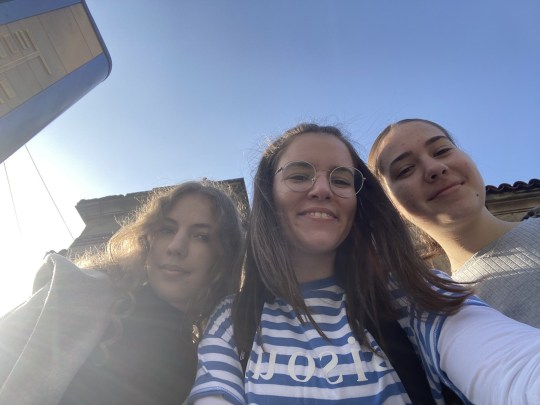

♡Learning outcomes
Identify own strengths and develop areas for growth
Demonstrate that challenges have been undertaken, developing new skills in the process
Demonstrate how to initiate and plan a CAS experience
Show commitment to and perseverance in CAS experiences
Demonstrate the skills and recognize the benefits of working collaboratively


♡Reflection
This trip to Belgrade was one of my favorites for so many reasons. The autumn break was much needed and the best way for me to spend it was in my favorite city with my grandparents, nephews and friends. Each experience was really interesting and useful. I explored the city with my family who knows Belgrade pretty well, but sightseeing with my friends was a bit different because I got the chance to see what would my life look like if I lived there. I visited Temple of Sveti Sava, Dedinje and city center with my parents and I liked visiting Dedinje the most because even though I spent most of my summer and winter breaks in Belgrade, that was my first time visiting that part of the town and I really liked the view from there. Sightseeing with my friends was way more fun because we got the chance to catch up on things that are going on in our lives and sightseeing itself was more suited for our age and it was a interesting to experience the city from their perspective. What was common to all of these visits was it is actually normal to get lost in the city no matter how long you live there. I would also like to mention my whole day visit to Faculty of Engineering with my other friend Jelena. She has just started going there this autumn and she is adjusting to the new city and all challenges living in big city brings and the most interesting part was that I got the opportunity to experience all these things too. Starting from transportation which is a bit complicated to lectures on the faculty and planning the whole day as a student. I met a lot of people who studied there and heard their experiences with the faculty and living as a college student. By the end of the day I got so used to the environment that I felt like I was student there as well. This experience was really important because it helped me realize that it is really similar to the IB program and that I already feel more prepared for university even though I don't plan on studying engineering. This week was one of the best trips I had this year and I hope to have many more experiences like this.
6 notes
·
View notes
Text
The 35 Craziest Arrowverse Episodes
„Crazy“ is an ever changing measure, especially in the Arrowverse. When Time Travel and Parallel Universes were introduced it was a heavy leap from the norm. A couple of seasons later it was pretty much normal. So this list reflects changes in the norm, episodes that pushed the crazy and unusual. What is crazy for on show is not crazy for another one. So if you mix it you might not find it as crazy as something below it, but it is as crazy … for the show it’s featured in.
So, let’s get into it:
35. Haunted (Arrow Episode 4.5/74, Written by: Brian Ford Sullivan, Oscar Balderrama, Directed by: John Badham)
John Constantine crosses over in the Arroverse in this episode which reveals Olivers dealings with him in the past and shows him restoring Saras soul. With this episodes the show started to embrace it supernatural arc, here „Arrow“ got mystically weird.

34. Hey, World (Legends 4.16/67, Written by: Phil Klemmer, Keto Simizu, Directed by: Kevin Mock)
In the Season 4 Finale of “Legends” Nate is brought back to life by the power of love and song, Vandal Savage returns in an unusal way and we meet a dancing dragon. Good stuff indeed.

33. Mr. And Mrs. Mxyptlk (Supergirl Episode 2.13/33, Written by: Jessica Queller, Sterling Gates, Directed by: Stefan Pleszczynski)
Do not listen to the haters. This is basically the “Supergirl”-Version of the 90s Trek-Episodes with Q in it. This one is probably the most comic book-y episode “Supergirl” ever did and it’s great.

32. Welcome to Earth2/Escape from Earth2 (Flash Episodes 2.13-14/36-37, 36: Written By: Greg Berlanti, Andrew Kreisberg, Katherine Walczak, Directed By: Millicent Shelton, 37: Written By: Aaron Helbing, Todd Helbing, David Kob, Directed By: J. J. Makaro)
Like I said, we got used to multiple earths. However this two parter is the first time we ever visited one. We visit Earth-2 in this, where pretty much everything and everyone is different. We are in for a lot of surprises.

31. License to Elongate (Flash Episode 6.6/120, Written By: Thomas Pound, Jeff Hersh, Directed By: Danielle Panabaker)
This one is the „Flash“-Version of a James Bond Movie, with Barry and Ralph encountering a Bond loving villain who steals ideas and lines from movies, which is exactly as much fun as it sounds.

30. The Book of Resistance Chapter 4: Earth Crisis (Black Lightning 3.9/38, Written by: Lamont Magee, Directed by: Tasha Smith)
In this one „Black Lightning“ discovers the multiverse and Jennifer meets different versions of herself, which lead to the shows best episode in quite a surprising way.

29. Cause and XS (Flash Episode 5.14/106, Written By: Todd Helbing, Jeff Hersh, Directed By: Rachel Talalay)
It’s the “Flash”s time-loop episode. More dark than funny, but with a lot of deaths and an happy ending, so in the end really worth it.

28. An Un-Birthday Present (Batwoman 1.11/11, Written by: Chad Fiveash, James Stoteraux, Directed by: Mairzee Almas)
„Batwoman“ goes into the whole doppelganger business with this unusual episode, where Beth is back, which is a surprise for Kate, even more given that Alice is still running around as well.

27. Invasion! (2) (Arrow (5.8/100, Written by: Greg Berlanti, Marc Guggenheim, Wendy Mericle, Directed by: James Bamford)
While the writers cleary had fun with Barry and Kara in this one, the heart lies in the dream reality, where weg et a look at a world where the Gambit never sunk.

26. Doomworld (Legends Episode 2.16/32, Written by: Ray Utarnachitt, Sarah Hernandez, Directed by: Mairzee Almas)
Alternate timelines are kind of an Arrowverse thing, but this one did not came to be through time travel but through the Legion of Doom rewriting history to their own liking. Therefore there is no cause and effect to the changes, which allowed the writers to have a lot of fun.

25. Camelot/3000 (Legends Episode 2.12/28, Written by: Anderson Mackenzie, Directed by: Antonio Negret)
From the far future to Camelot and King Arthur – this episodes travelled far and mixed those two areas up quite nice.

24. Witch Hunt (Legends Episode 4.2/53, Written by: Keto Shimizu und Matthew Maalaa, Directed by: Kevin Mock)
Here „Legends“ inserted the a singing Fairy Godmother into the era of the Salem Witch Trials. The Fairy Godmother was really not the fairytale kind, but rather an evil one, but boy, she could sing.
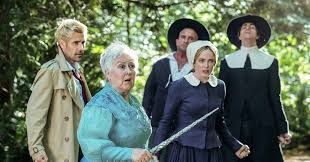
23. Back from the Future Part 1 (Supergirl (Episode 5.11/98, Written by: Dana Horgan, Katie Rose Rogers, Directed by: David Harewood)
An evil Winn from another earth turns up, which brings back our Winn and we get a Winn-Off, so to speak, and Winn with Clark Kent glasses so he wouldn’t be recognized.

22. Elongated Journey into the Night (Flash Episode 4.4/73, Written By: Sterling Gates und Thomas Pound, Directed By: Tom Cavanagh)
This episode introduces the main one, which was Ralph of course, who discovers his new powers in this and is not as amused about them as we are.

21. What’s Past is Prologue (The Flash Episode 5.8/100, Written By: Todd Helbing und Lauren Certo, Directed By: Tom Cavanagh)
In the 100th episode Barry and Nora time travel through the history of the show, face down the Flash greatest villains of the past while trying not to change the time line, which of course does not work out.

20. Reset (Arrow (Episode 8.6/166, Written by: Onalee Hunter Hughes und Maya Houston, Directed by: David Ramsey)
Yes it’s a time loop episode in „Arrow“! It’s probably the moment the show embraced it’s funny pages origin the most wholehearted.

19. The Virgin Gary (Legends Episode 4.1/52, Written by: Phil Klemmer und Grainee Godfree, Directed by: Gregory Smith)
John Constantine joins the Legends in the time for a murderous unicorn at Woodstock that roofies most of the team and gets Ray to snog a tree, Mick and Nate to exchange loving vows, and Zari to chase lights.

18. Helen Hunt (Legends Episode 3.6/39, Written by: Keto Shimizu und Ubah Mohamed, Directed by: David Geddes)
Helen of Troy single handedly destroys the Golden Era of Hollywood, simply by being there and driving men nuts. Studio exes try to kill each other in order to get her, while Damien Darhk becomes her agent to wreck even more havoc.

17. The Fellowship of the Spear (Legends Episode 2.15/31, Written by: Keto Shimizu, Matthew Maala, Directed by: Ben Bray)
This episode is “Legends”-Homage to Tolkien and his works. However the most quotes and nods go to the Peter Jackson Movies, which is no problem, because we love them too.

16. Starling City (Arrow (Episode 8.1/ 161, Written by: Beth Schwartz und Marx Guggenheim, Directed by: James Bamford)
We are essentially reliving the pilot with a few signifcant changes. Turns out we are actually on Earth-2 and Oliver pretends to be his doppelganger in order to do a thing for The Monitor.
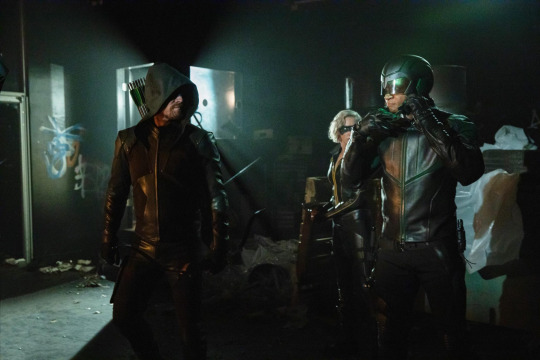
15. Séance and Sensibility (Legends Episode 4.11/62, Written by: Grainne Godfree, Jackie Canino, Directed by: Alexandra La Roche)
What have Jane Austen and Bollywood in common? Both a represented in this episode that features a Bollywood number and the death of Jane Austens writing career.

14. Luck is a Lady (Flash Episode 4.3/72, Written By: Sam Chalsen und Judalina Neira, Directed By: Armen V. Kervokian)
This episode introduces Hazard, a Meta who generates Bad Luck in order to have Luck herself which creates a lot more chaos than you would think.

13. Emerald Archer (Arrow Episode7.12/ 150, Written by: Marc Guggenheim und Emilio Ortega Aldrich, Directed by: Glen Winter)
„Cops“ meets „Arrow“. This is a documentary about Team Arrow, or rather the making of the documentary about Team Arrow or rather a very special very unsusal episode.

12. The Bottle Episode (Supergirl Episode 5.10/97, Written by: Derek Simon, Directed by: Tawnia McKiernan)
We get a lot of doppelgangers, most of them Brainys, and a lot of chaos, I mean more chaos then most other shows usually have, except for „Legends“.

11. Aruba (Legends Episode 2.17/33, Written by: Phil Klemmer und Marc Guggenheim, Directed by: Rob Seidenglanz)
The Finale of Season 2 features two sets of Legends, while the team goes back and while Malcolm, Damien, and Snart are mostly confused Eobard strikes back by recruiting a lot of his former selfes.

10. The Good, the Bad and the Cuddley (Legends Episode 3.18/51, Written by: Marc Guggenheim und Phil Klemmer, Directed by: Dermott Downs)
In the Season 3 Finale we got a massive Beebo who fights a gigantic demon. The Beebo was created by a Legends Orgy and symbolizes … well love I guess.

9. Raiders of the Lost Art (Legends Episode 2.9/25, Written by: Keto Shimizu, Chris Fedak, Directed by: Dermott Downs)
This is officially the episode where „Legends“ went nuts. Oh and it’s a delicous one. George Lucas never became a filmmaker after being scared of by Malcolms and Damiens attempts to kill amnesiac Rip Hunter who thinks he is an American filmstudent, whose script is basically the plot of the shows first season of „Legends of Tomorrow.“

8. It’s a Super Life (Supergirl Episode 5.13/100, Written by: Robert Rovner, Jessica Queller, Derek Simon, Nicki Holcomb, Directed by: Jesse Warn)
The 100the episode watches videos of the show and comments on them, then inserts Kara into the past and let her change things and create alternate timelines, what ifs, so of how things would have turned out if she had made different choices.

7. Beebo the God of War (Legends Episode 3.9/42, Written by: Grainne Goodfree und James Eagan, Directed by: Kevin Mock)
Mostly it’s the episode about Beebo Day. You know, the blue god, who hungers for war and conquest? Whose birthday we celebrate once a year in december and … wait? What was I talking about?
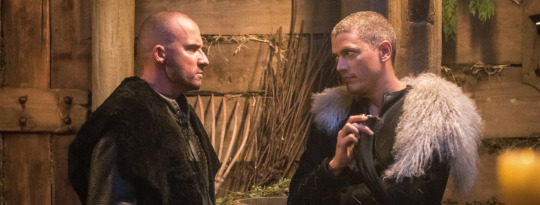
6. Crisis on Infinite Earths Part 1-5 (Supergirl, Batwoman, Flash, Arrow, Legends, Part 1: Supergirl Episode 5.9/96, Written by: Robert Rovner, Marc Guggenheim, Derek Simon, Jay Faerber, Directed by: Jesse Warn, Part 2: Batwoman Episode 1.9/9, Written by: Din Whitehead, Holly Henderson, Directed by: Laura Belsey, Part 3: The Flash Episode 6.9/123, Written By: Lauren Certo, Sterling Gates, Eric Wallace, Directed By: David McWhirter, Part 4: Arrow: Episode 8.8/168, Written by: Marv Wolfman, Marc Guggenheim; Directed by: Glen Winter, Part 5: Legends of Tomorrow Episode 5.0/68, Written by: Keto Shimizu, Ubah Mohamed, Directed by: Gregory Smith)
In the biggest and craziest Crossover in the history of television the multiverse is destroyed and rebuilt, Oliver Queen dies, we meet an evil Batman and we get a Supermen Team Up, among many other things.
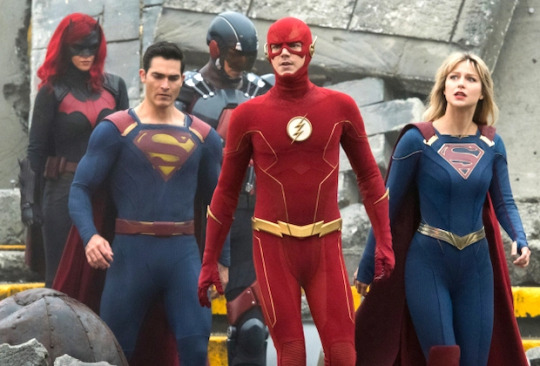
5. Legends of To-Meow-Meow (Legends Episode 4.8/59, Written by: James Eagan und Ray Utarnachitt, Directed by: Ben Bray)
Sulky about missing out on the Crossover the Legends crossovered with themselves in Season 4. John and Charlie destroyed the timeline for selfish reasons, and now everything is wrong and everything they do makes things worse instead of better.

4. Meet the Legends (Legends Episode 5.1/69, Written by: Grainne Godfree, James Eagan, Directed by: Kevin Mock)
This episode is the documentary and the making oft he documentary. Think Arrows „Emerald Archer“ only way carzier and funnier.

3. Duet (Flash Episode 3.17/63, Written By: Aaron Helbing, Todd Helbing, Greg Berlani, Andrew Kreisberg, Directed By: Dermott Daniels Downs)
It’s the Musical Episode! The „Supergirl“-Crossover has all the jazz – singing, dancing, kissing, opening up about feelings – and also a mini „Glee“-Reunion.

2. Elseworlds Part 1-3 (Flash, Arrow, Supergirl, Part 1: The Flash Episode 5.9/101, Written By: Eric Wallace und Sam Chalsen, Directed By: Kevin Tancharoen und Tom Cavanagh, Part 2: Arrow Episode 7.9/147, Written by: Marc Guggenheim und Caroline Dries, Directed by: James Bamford, Part 3: Supergirl Episode 4.9/74, Written by: Mac Guggenheim, Derek Simon und Rob Rovner, Directed by: Jesse Warn)
In this Crossover Oliver und Barry switch identities which no one on Earth-1 believes, but Kara’s help leads to an evil not-quite Superman and a brand new reality.

1. The One Where we‘re Trapped on TV (Legends Episode 5.13/81, Written by: Grainne Godfree, James Eagan, Directed by: Marc Guggenheim)
And the award for the Craziest TV Episode of all time goes to this one, where the Legends are trapped on TV. We get very familiar but strange versions of „Friends“, „Downtown Abbey,“ and „Star Trek“ with the Legends as the main characters instead.

#Arrowverse#Arrow#The Flash#Supergirl#legends of tomorrow#Batwoman#Black Lightning#Craziest Episodes#favorite episodes
71 notes
·
View notes
Text
Reading Herodotus: A Study of the Logoi in Book 5 of Herodotus’ Histories
“Elizabeth Irwin, Emily Greenwood, Reading Herodotus: A Study of the Logoi in Book 5 of Herodotus' Histories. Cambridge/New York: Cambridge University Press, 2007. xvi, 352. ISBN 9780521876308 $99.00.
Review by David J. DeVore, University of California, Berkeley. [email protected]
Table of Contents (http://lccn.loc.gov/2007300387 )
This collection of twelve essays, by twelve Anglophone scholars based in four countries, grew out of a Cambridge conference in July 2002. Each contributor applied individual autopsy to a specific logos from Book 5 of Herodotus. As Irwin and Greenwood explain in their “Introduction: reading Herodotus, reading book 5” (pp. 9-19), Book 5 was chosen because it stands at a transitional point in Herodotus’ narrative, both thematically (the non-Hellenic ethnographies cease) and ethno-politically (the Ionian Revolt embroils mainland Greeks in Persian affairs). Contributors’ only guidelines were “to respond individually as readers” to the text and “to trace the relevance of his/her logos in ever widening narrative contexts” (6). In doing this, the editors “hoped that the project of bringing together different readers to address the same book in concert, but with distinctive voices and guided by different logoi, would provide an apt demonstration of just how much may be required to read Herodotus in all his complexity” (1).
To convey some of the flavor of how the different essays jell as unit when read in succession, what follows summarizes, compares and (to a lesser extent) evaluates the main points from each of the volume’s 12 voices.
Elizabeth Irwin, “”What’s in a name?” and exploring the comparable: onomastics, ethnography, and kratos in Thrace. (5.1-2 and 3-10)”.
Irwin argues that Herodotus juxtaposes her passage’s Perinthian-Paeonian battle and the Thracian ethnography not accidentally at a geographical, and therefore textual, hinge. Throughout both logoi, Herodotus encourages readers to symballesthai (interpret and infer), just as the Paeonians’ reflection on the onomata in a Delphic oracle delivers their victory over the Paeonians (5.1.2). Irwin further elucidates allusions to Athenian matters in the onomata of this logos, suggesting fairly convincing affinities between Herodotus’ Paeonians and his Athenians. (Unmentioned in Irwin’s treatment are both people’s treacherous tendencies. Where the Paeonians attack the Perinthians after they have agreed to settle their dispute through a tripartite duel (5.1), Herodotus’ Athenians constantly threaten or enact treachery toward their allies.)1 Irwin then locates the subsequent Thracian ethnography within a late fifth-century Athenian discourse on Thracians. His representation of their exceptional customs and analysis of their alleged powerlessness is compared to Thrakia in Sophocles’ fragmentary Tereus, Thucydides’ more directly power- and resource-driven remarks (esp. Thuc. 2.29 and 96-101), and Aristophanes’ domesticating parody ( Acharnians 141-71). Irwin’s conclusion: both logoi present “different (Thracian) ways to talk about the same thing, contemporary Athens” (86).
Robin Osborne, “The Paeonians (5.11-16)”.
Osborne singles out sources of power and the consequences of choice as salient themes in Persia’s conquest of (most of) the Paeonians. Examples: Darius, on the one hand, can reward his Hellenic henchmen Histiaeus and Coes with tyrannies respectively in Myrcinus and Mytilene, and then conquer Paeonia as more or less an afterthought, for (5.12.1) he “sees for himself, desires, orders” (91). On the other hand, certain Paeonians choose ingeniously to elude Persian mastery by building elevated houses on Lake Prasias and catching fish through trapdoors (5.14-16).
David Fearn, “Narrating ambiguity: murder and Macedonian allegiance (5.17-22)”.
Fearn builds on past scholarship about constructions of Greekness, kingship and (to a lesser extent) gender in Alexander of Macedon’s assertion of Hellenic kingship.2 To Fearn, Herodotus “raises questions and problems concerning the ambivalence of Macedonian cultural practices” (114) by spotlighting (1) Alexander’s symposiastic coup against his father Amyntas; (2) the new king’s stealthy murder of Darius’ envoys by sending crossdressing assassins to pose as the Persians’ customary female symposiasts (a doubly bad performance of Hellenic xenia by Alexander?); and (3) his alleged ( κῃ, 5.22.2) victory in the Olympic stadion (which the unreliable hellanodikai affirm, cf. 2.160).3 Like Irwin with the Paeonians, Fearn associates the tyrannical tendencies and ambiguous loyalties of the Histories‘ Alexander with contemporary Athens. Allusions to mythical exemplars (the Iliadic Paris for Alexander, the Odyssey‘s Laertes for Amyntas) further enrich this thick explication.
Emily Greenwood, “Bridging the narrative (5.23-7)”.
One of the few Herodotean interests that Fearn largely omits, geography, emerges to direct audiences in Janus-like “reading backwards and forwards” (131), according to Greenwood’s reading. Backwards: it is while crossing the Hellespont that Darius remembers how Histiaeus had rescued him from Scythia (5.11, cf. 4.97). Forwards: the Persian general Megabyzus’ excuse for removing Histiaeus from Myrcinus, namely that Myrcinus supplies the wood and timber that could fund a revolt, “has an anachronistic colouring, calling to mind the importance of Thrace in the Pentekontaetia and the Second Peloponnesian War” (132). Moreover, Darius’ recall of Histiaeus may echo stories about Pausanias and Themistocles. Greenwood is also one of the few authors in the collection to note economic structures: she presses the unHellenic juxtaposition of μισθὸν δωρεήν at 5.23.1, showing how the conflation of the asymmetrical exchange of misthos with symmetrical gift-exchange at the court of Darius characterizes both the Persian “commodification of advice” and (following John Gould) the Herodotean “give-and-take” economy of historical causation.4 (Greenwood appears to allude to Darius’ now-famous epithet of κάπηλος, earned through his financially-driven administration of the Persian Empire (3.89.3).)
Rosaria Munson, “The trouble with the Ionians: Herodotus and the beginning of the Ionian Revolt (5.28-38.1)”.
Munson continues the collection’s stress on narrative transitions. Whereas the historian’s statement, commonly cited among Herodoteans, that Athens’ reinforcements for the Ionian rebels “came to be the beginning of misfortunes [ ἀρχὴ κακῶν ] for both Greeks and barbarians” (reviewer’s translation, 5.97.3) has become a locus classicus among Herodoteans,5 Munson contextualizes the ἀρχὴ κακῶν into a lengthier causal chain: both 5.28 and 5.30.1 held that the Naxian-Parian disputes that prompted Aristagoras’ machinations were the ἀρχὴ κακῶν —for Ionian Greeks, at least. Later, the equally famous 6.98 casts the vicious chain of ἀρχαὶ κακῶν beyond Herodotus’ chronological boundaries: this proleptic observation of the coming κακά that the struggle for ἀρχή (here, “hegemony/rule/empire”) produced points the reader to further evils down into the Peloponnesian War. Munson proceeds incisively through a careful reading of the Ionian protagonists’ mixed motives (“imperialism as well as liberation,” 156) and parallels between Milesian and later Athenian imperialism. Most fascinating is her creative reading of Aristagoras and Histiaeus as comic characters: she asks, e.g., whether the audience could take Aristagoras seriously when he fancies his rule over Miletus as a βασιληίη (5.35.1).
Simon Hornblower, “The Dorieus episode and the Ionian Revolt (5.42-8)”.
Hornblower replicates Irwin’s feat of proving a Herodotean digression’s larger relevance, here with Herodotus’ west Greek diversion from east Greek affairs. First, Dorieus mirrors but also contrasts his brother the Spartan King Cleomenes religiously and militarily. Hornblower also sees parallels between Sybaris in its fight against Croton and the Ionian first city Miletus, and in the verbal echo between Philippus of Croton’s loyal liturgies at Cyrene and those of and Cleinias of Athens at Artemesium.
Christopher Pelling, “Aristagoras (45.49-55, 97)”.
Pelling reads his title character more tragically than Munson’s comic bungler. He investigates two terms associated with Aristagoras: first, διαβάλλειν (“throw words around,” “slander” and “trick”/”put one over on,” esp. 5.50.2, 5.97.2) fits both Aristagoras’ and his interlocutors’ acts. Second, Aristagoras’ Lieblingswort, εὐπετής, consistently heralds tragically impossible situations (5.31, 5.49.3 and .8, 5.97.1). Pelling then defends Aristagoras’ rationality in trying unsuccessfully to diaballein Cleomenes (5.49), in the light of both Cleomenes’ own interventionism and previous Spartan expeditions the eastern Aegean (1.69f., 1.82f., 3.46-8, 148).6 Finally, Aristagoras’ failed cartographically enhanced rhetoric with Cleomenes provokes a metaliterary reflection: does Herodotus expect his geographically informed apodexis (as at 5.52-4) to be any more persuasive than Aristagoras’ (and Hecataeus’, 5.36)?
Vivienne Gray, “Structure and Significance (5.55-69)”.
Gray resumes the collection’s now-familiar quest to uncover themes in her passage significant to the Histories as a whole. The Homeric ploy of pathetic digressions on fallen soldiers’ lives indeed supplied Herodotus with a narrative model, though oddly Gray mentions this device not when she contextualizes Herodotus’ lengthy tangent on the tyrannicides’ Phoenician and Eretrian origins (5.57-62), but in discussing Hipparchus’ “warning vision” of 5.56 (203). As for Cleisthenes’ reforms (5.66-9), Gray frames them within Herodotus’ general interest in ethnic tension and the relevance of names; in contrast to Munson, she plays down the historian’s continual disparagement of the Ionians.
Johannes Haubold, “Athens and Aegina (5.82-9)”.
Herodotus’ digressive archaeology of Aeginetan-Athenian enmity, Haubold argues, constitutes a “shift from a history of the gods to a history of humans…a gradual and complex shift which is never complete and always remains open to modifications” and thus a questioning of epic causalities (230). Particularly sensitive is his treatment of Herodotus’ sunkrisis of the two explanations for the failed Athenian theft of Aeginetan cult statues: did the gods prevent a lone Athenian crew from dislodging the statue (5.85), or did a numerically superior Argive-Aeginetan force defeat several ships of Athenian marines (5.86)?7
John Moles, “”Saving” Greece from the “ignominy” of tyranny? The “famous” and “wonderful” speech of Socles (5.92)”.
Moles’ subtle touch fingers some fundamental questions about Herodotean discourse. Noting nine (!) previous scholarly interpretations of 5.92, he stresses the speech’s “strong muthos qualities” (248) and sets about disentangling both internal and external audiences’ reception of the speech. First, the Spartan direct audience, though its response goes unmentioned (cf. 5.93), was perhaps shamed when Socles invoked Sparta’s past defense of isokratiai against tyranny (5.92 α.1). Second, the indirect audience of Sparta’s other allies (who go unnamed), while taking courage in Socles’ resistance to their Spartan hegemon, would loathe the potential for tyranny represented in the “figured speech” about Cypselus and Periander (5.92e-g). Third, the meta-audience composed of Herodotus’ readers would find confirmation of the historian’s own hostility toward tyrants,8 though attentive readers might detect discrepancy between Socles’ speech and Periander’s character elsewhere in the Histories (e.g. a page later at 5.95.2!). Thus, “one man’s tyrant can be another man’s king,…and…even the tyrant can play a positive role in the imposition of law over previous disorder—even, perhaps…within ultimately ‘equal governments'” (258).
A parallel Herodotean “historical irony” applies to the democratic-(in Herodotus’ time but not at 5.92)-yet-tyrannical Athens (262). Does Herodotus imply that the Spartan coalition of 504 should have reinstated Hippias and risked the moral outrage of an individual tyrant? ” Wrong,” answers Moles (263), for in this counterfactual scenario Sparta would have emerged as the tyrannical power had she deposed Athens’ isokratia. Less convincing is Moles’ parting induction (265f.), from the Herodotus’/Socles’ metatextual warning against inherently abominable tyranny, that the Histories as a whole had a specifically moralistic purpose (“a great libertarian text,” 268). Besides 5.92, Moles only goes so far as to support his moralistic Herodotus by an appeal to “historiographical tradition”—but he only supports this point by citing (“E.g. …”) Diodorus, Livy and Tacitus (265, nn. 96-8)! Nonetheless, a more explicit and focused debate about whether or to what extent the Histories were moralistic (and what we mean by this) would be welcome, especially after the past generation and more of scholarship since Immerwahr has alerted us to Herodotus’ sophisticated narrative and rhetorical techniques.9 How does Herodotean description translate into prescription?
Anastasia Serghidou, “Cyprus and Onesilus: an interlude of freedom (5.104, 108-16)”.
Serghidou asserts that “the geographical and cultural liminality of Cyprus furnishes Herodotus with a convenient symbolic counterpart to his treatment of the Ionian Revolt” (272). Thus, though the most rebellious Cypriot poleis, Salamis and Soli (whose names may evoke the Attic polis and lawgiver, respectively), show clear Hellenic acculturation and loyalty, the Salaminian monarch Onesilus shows (“‘Eastern'”) autocratic traits. How (un-)Hellenic these and other such these cultural structures and practices were remains up for debate, Serghidou shows.
John Henderson, “”The Fourth Dorian Invasion” and “The Ionian Revolt” (5.76-126)”.
Ranging the most widely in Herodotus’ text is John Henderson’s contribution (though the essay keeps coming back to 5.76). In typically idiosyncratic style, Henderson justifies his reading of Cleomenes’ “fourth Dorian” invasion of Attica in the context of the Histories‘ many far-reaching imperialisms and (taking a Foucaultian step past Osborne’s essay) concomitant knowledge. He then brings the collection to an (ironically) neat summation by tracing “the poetics—the metapolitics—of esbole” through an “off-centre passage” (297). He pinpoints numerous allusions throughout the chain of invasions in the Histories starting with 5.76 to events in the Peloponnesian War: highlights include the four Spartan invasions into Attica during the Peloponnesian War (whence Henderson’s title), the repeated stress on Plataea and Decelea, and Thucydides’ Spartan ambassador echoing Herodotus on ἀρχὴ κακῶν (5.97.3, Thuc. 2.12.2f.). Henderson then traces Herodotus’ discursive causality from Cleomenes’ foreign policies to the Spartan invasion (and the “?fifth? ‘Dorian invasion’ non-episode” of 5.90-3 (306)) to the Athenian naval awakening, which brings the two mainland Hellenic imperialists to their contemporary status as rival powers. “The Histories are pledged to halt the march of expansionist empires right here, on the outskirts of Attica,” Henderson gnomizes (309, among numerous other observations).
As the preceding summaries aim to suggest, the collection achieves its aim of promoting a multiplicity of interpretive experiences for Histories 5. The essays are generally trenchant and nuanced, and cover more than just the themes the editors choose to highlight in the introduction (Greek politics—particularly criticism of Athens—Greek ethnicity, and historiographical representation): Persian power structures, political geography, early Greek rhetorical technique, and the undertones of Herodotus’ wordplay also recur frequently. Regularly I found myself rushing back to a Herodotean passage I’d read several times before to observe it from a different angle, or flipping back from, say, Henderson’s piece to see whether Irwin reinforced or disputed his point about “political dialectic sloganized through this family of puns” (303 n. 50).
It must be noted, however, that the collection’s greatest strength, namely thick coverage of Book 5, may also prove to be its greatest weakness, i.e. a narrow focus. While all the essays contextualize their respective logoi quite solidly and at times brilliantly within the Histories, fewer take the more daring step of drawing fresh conclusions about the totality of Herodotus’ project. Put another way: insights concerning a character, an ethnic or political group, or rhetorical and structural tactics come frequently; but original thoughts on characterization, ethnicity, politics, rhetoric, and structural strategy are more scarce.
The thick but narrow focus of the volume as a whole makes it a must-read for Herodoteans, though historiographers and Greek prose specialists too will profit from a careful study of it with Book 5; and certainly, any scholar researching any passage in Histories 5 will have to consult it (with the aid of its excellent index locorum). Most recommended for Hellenists generally are those essays that manage to transcend the confines of specific logoi to reach broader insights about Herodotus’ project. This group includes Irwin’s (on Herodotus’ participation in Athenian ethno-political discourse), Munson’s (on causation and humorous characterization), Henderson’s (on narratival engagement with contemporary power structures), and especially Moles’ (on relations among types of audiences and embedded political theory).
Notes
1. On Athenian characterization in the Histories see most recently E. Baragwanath, Motivation and Narrative in Herodotus (Oxford, 2008), esp. chs. 5 and 9.
2. Particularly E. Badian “Herodotus on Alexander I of Macedon: a study in some subtle silences”, in S. Hornblower (ed.), Greek Historiography (Oxford, 1994).
3. In adopting (manipulating?) the symposium and the Olympics, presumably so as to affirm their own Selbstdarstellung as Greek, but then inviting the “women” in to satisfy the Persian envoys’ nomoi, do the Macedonians parallel the Persians as (“barbarian”) appropriators of others’ customs (Hdt. 1.135)?
4. J. Gould, Herodotus (New York, 1989): ch. 4; “Give and take in Herodotus” in id., Gift, Ritual, Memory and Exchange. Essays in Greek Culture (Oxford, 2001). Greenwood’s discussion supplements the discussion of Darius as economic innovator in L. Kurke, Coins, Bodies, Games, and Gold: the Politics of Meaning in Archaic Greece (Princeton, 1999), 68-88.
5. At least since Fornara pressed it in advocating Herodotean opposition to Athenian imperialism. See Fornara, Herodotus: an Interpretive Essay (Oxford, 1971), 12 and 76. In this book alone, the editors (10), Hornblower (171f.), Haubold (244) and Henderson (300) all refer rather casually to 5.97.3, and the index locorum shows a dozen other appeals to 5.97 as a whole.
6. Though it comes shortly after the Aristagoras-Cleomenes meeting, Pelling does not mention 5.63.2f. Here the first Spartan anti-Pisistratid force invades Phaleron; a second, more successful force comes by land under Cleomenes, who pointedly scraps the marines and succeeds (5.64f.; cf. Henderson at 302). Could this pair of events have amounted to a further signal of a Spartan retreat from naval warfare?
7. The “Athenian” appeal here to the supernatural diverges from the general scarcity of supernatural agency in most Athenian logoi in Herodotus. See O. Murray, “Herodotus and Oral History” [1987], reprinted in N. Luraghi ed., The Historian’s Craft in the Age of Herodotus (Oxford, 2001): 29-34. Murray’s trenchant observation that the extent of supernatural elements from logos to logos tends to correspond to putative geographical provenance has not received the attention that it warrants, even though the essay is frequently cited (but cf. Murray’s later reflections in “Herodotus and Oral History Reconsidered,” also in Luraghi, ed., 2001).
8. Though Moles does not cite him, Donald Lateiner showed the pervasiveness of Herodotus’ hostility to tyrants in The Historical Method of Herodotus (Toronto, 1989), ch. 7.
9. See e.g., L. Kurke, Coins, Bodies, Games, and Gold (Princeton, 1999): esp. chs. 1-4 passim; T. Harrison, Divinity and History. The Religion of Herodotus (Oxford, 2000): esp. ch. 4; R. Thomas, Herodotus in Context: Ethnography, Science and the Art of Persuasion. (Cambridge, 2000): ch. 4; R. Munson, Telling Wonders: Ethnographic and Political Discourse in the Work of Herodotus (Ann Arbor, 2001), passim; N. Fisher, “Popular Morality in Herodotus,” in E.J. Bakker et al. (eds.), Brill’s Companion to Herodotus (Leiden, 2002); J. Griffin, “Herodotus and Tragedy” in C. Dewald and J. Marincola (eds.), The Cambridge Companion to Herodotus (Cambridge, 2006); Baragwanath (2008), passim.”
Source: https://bmcr.brynmawr.edu/2009/2009.08.05/
1 note
·
View note
Text
Ivar the Boneless || God-Like
My other rants
So I’ve heard a lot of talk as of late that people don’t understand what sort of man Ivar is to believe he is a god off the word of Freydis’s lips. Arching off my last post of where Ivar grew up in uncertainty which certainly was reflected in 5.11 where Ivar can’t understand why the gods favour him, here comes another rant.
Why does he think himself God-Like? Let’s rewind, rewind our asses allllll the way to season one where Ivar was barely a thought in Ragnar’s mind.
Season One

Season One brought the fight between the lone farmer Ragnar Lodbrok and Earl Haraldson. Ragnar had sailed across the salt sea to England where he raided. Following this, rumours began to sprout that Ragnar was the descendent of Odin. When Haraldson heard of this, he scoffed. In fact upon setting his farm on fire he said: “Let the man who thinks that he is descended from the Gods learn that he is human after all.”

Season Two brings together Princess Aslaug and Ragnar Lodbrok. Aslaug’s genealogy is increasingly important. Her father was Sigurd who had slain the dragon Fafnir. Her mother was Brynhild. Brynhild wasn’t touched much in the series but mythologically speaking, she was once a Valkyrie. One that Odin banished with the Svefnthorn into a slumber. While Hirst didn’t touch much on this, I’m sure that as a very proud princess who told Ragnar “My father would have never!” Ivar heard this story more than once. All the boys did, likely.

Season Three brings Harbard to Kattegat. This is significant because the women, Siggy included, suspect him of being a god. He comes as he wills and leaves as he wills. However his name is increasingly suspect. Odin was known to go by the name as Lagertha points out in season one of Vikings. The name is also found in the saga Harbardsljod where he learns a language of the dead. Anyway, he is a god that relieves Ivar of some pain before disappearing with Siggy’s death. When he comes back, Aslaug is delighted to introduce them again. Harbard is a story teller. We can garner that he also spoke to young Ivar of the way of the gods.

In season four, Aslaug brings the son she loves more than anyone in the world to Floki to learn to love the gods and their ways. Floki is eccentric by nature and teaches him to recognize their touch. Floki had been so sure of the signs that he might kill Athelstan and reasoned them to be of the gods and not his own hate. His eccentric personality spilled over into Ivar’s life and made him a bit more wily than his other brothers.
He also revered his father as a strong Viking where others like Bjorn said people were seeing him as a god. Ragnar rejected the sentiment largely, it seems, because he had no interest in being a god. He rejected the gods and even the seer-- even when Sigurd’s eyes were presented to him in season two. Perhaps, he was just exhausted. But Ivar is young... and conditioned.
He thinks for himself certainly. Among the humans, he has no interest in listening to the words of those he doesn’t respect. However in season 4B, he stops from slaying Margrethe because of her words in eluding that the gods will think he is a coward. He is a staunch believer in his faith. He also saw Odin. He was touched by Odin. He was raised among Odin’s symbols of a raven.
These are all building blocks. Building blocks that groomed him not to only believe in the gods but perhaps-- also think that he might have been a god himself because of how favoured he was. While I don’t believe the intent of Aslaug or Floki’s teaching was to be a god, but revere them, it certainly makes sense. With Freydis heavily sharing in grooming him, it’s not that much of a stretch to me that he begins to believe her pretty words.
Works Cited
MacCulloch, John Arnott. The Mythology of All Races: Eddic. Vol. 2, Cooper Square Publ., 1964.
Sigurd the Dragon Slayer from Sacred Texts
70 notes
·
View notes